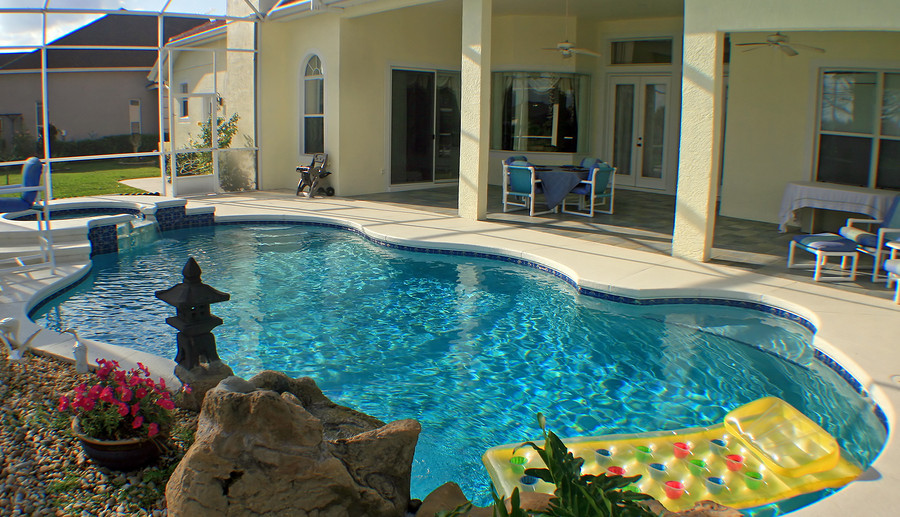
During the hot, humid summer months, few things are more relaxing than a cool swimming pool. To maintain the tranquility of pools, spas, and hot tubs, safety considerations are vital.
Most people take into account the common dangers of UV radiation, injuries from slipping on wet decks and concrete, and the threat of drowning.
However, there is another little-known risk to consider: the improper grounding and bonding of your swimming pool.
Metallic objects attached to your swimming pool – such as rails, ladders, and brackets for lighting fixtures – can be a shock hazard if improperly bonded. Like all electrical wiring and fixtures, those around a pool should be properly grounded for the safest experience.
What is Swimming Pool Bonding?

Image via http://www.diychatroom.com/
When considering swimming pool bonding, it’s important to become familiar with the concept of equipotential bonding.
According to the National Electric Energy Testing Research and Applications Center of the Georgia Institute of Technology, an equipotential grid is vital to establish an electrically safe environment for your pool, spa, or hot tub.
Proper equipotential bonding involves the connection of metallic pool components with a bare copper wire. This causes such elements to possess the same potential.
Without proper swimming pool bonding, your body can complete the circuit between areas of differing potential, resulting in a potentially deadly shock.
5 Components of Pools that Require Proper Bonding
According to Erico.com, the National Electric Code (NEC) “requires bonding of all the following metallic parts in a permanently installed swimming pool with a #8 AWG solid or large conductor.”
All metal parts must also be connected to a bonding grid covering the entire contour of your pool.
1. Hand Rails, Ladders, Diving Boards, and Drains.
Every swimming pool contains some form of these particular fixtures. For durability, these structures are often made of metal.
In swimming pool bonding, a conductive path between such metal objects is necessary. When emerged in a pool, the last thing anyone wants is to become the completion of an electrical circuit.
2. Underwater Lighting Fixtures.
It is important to connect all lighting fixtures to your pool’s equipotential grid. The point of a lighting fixture is to illuminate your pool at night, not cause a potentially deadly shock.
3. Decks and the Reinforced Metal of Your Pool’s Shell.
Certain types of pool shells are allowed in equipotential bonding grids. These include pools with welded or bolted walls, and pools utilizing reinforcing steel.
It is also important to connect your deck to the equipotential grid, particularly for a concrete deck with no reinforcing metal.
4. Electrical Equipment Associated with Your Pool.
All pools contain a multitude of electrical equipment for both convenience and proper functionality. Pumps, automatic covers, water heaters, and other such equipment must be bonded to the equipotential grid to keep your pool safe.
5. Any Metal Structures – Such as Conduits or Window Frames – Within 5 Feet of the Pool Wall.
Simply bonding the metallic structures directly connected to your swimming pool isn’t enough. After exiting your pool, your body is still wet, causing a reduction of body resistance.
Touching nearby metallic structures can also result in a shock. As stated by Mike Holt of Ecmweb.com, components five feet horizontal to your pool wall and twelve feet above the pool’s water level require bonding.
Find a Professional Electrician You Can Depend On
The last thing anyone wants while enjoying their pool in the summer is to receive a potentially life-threatening shock. Conductive Electrical Contracting is here for you.


